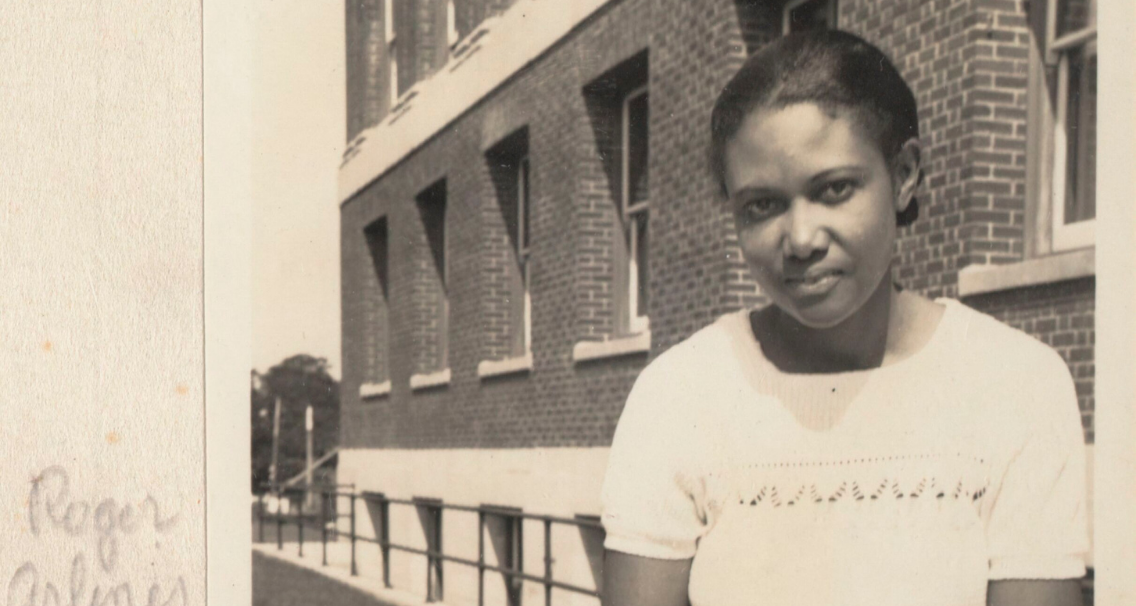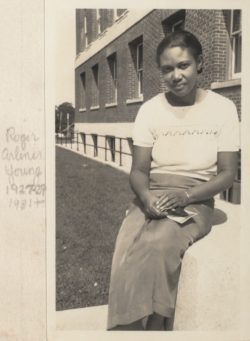
Celebrating Wave Makers for Women’s History Month: Dr. Roger Arliner Young
March 8th marks International Women’s Day, an important day celebrating the courage and achievements of women everywhere. This day is part of an even larger celebration of National Women’s History Month throughout March. This month, we’re honoring and reflecting on the important contributions of women who made waves in ocean conservation, and our greater history, and paved the way for women and girls to pursue their dreams. This International Women’s Day, we profile and honor Dr. Roger Arliner Young, the first Black woman to earn a doctorate in zoology and an inspiration to many. She lived from 1899 to 1964, and her struggles in her education, career, and life demonstrated strength and made it a little easier for other women with big dreams and inquisitive minds to follow in her footsteps.
Dr. Young first enrolled at Howard University in Washington, D.C. to study music in 1916. With low grades early in her studies, it wasn’t clear where her journey would take her. In 1921, she took her first science course with Dr. Ernest Everett Just, the head of the Zoology department at Howard and a pioneering Black biologist. Dr. Just saw great potential in Young and offered her his mentorship. The rest is history, and a pretty amazing piece of it at that.
After finding her passion for animals and the natural world, Young graduated with her bachelor’s degree in 1923. Dr. Just helped Young apply to graduate programs and find funding to support her studies. In 1924, she began her master’s degree part-time at the University of Chicago. There, she published her first research article, which appeared in the hallmark journal, Science. Young’s grades and achievements were impressive, and she was invited to join Sigma Xi, an honorary science research society; the invitation was a rarity both because master’s students were not often eligible and because very few women were part of the organization. Young completed her master’s degree in 1926 and she reconnected with her former mentor, Dr. Just, to do summer work with him at the Marine Biological Laboratory in Woods Hole, Massachusetts.
Young’s summer research was a significant contribution to marine science, not only because of the topics and findings of her work, but also because she was the first Black woman to publish in the field of marine zoology. In early 1929, Young temporarily replaced Just as the head of Howard University’s Zoology Department while Just conducted research in Europe. Later that year, Young moved back to Chicago to begin her Ph.D. She received mentorship from Dr. Frank Lillie, a professor and embryologist who mentored her mentor in Massachusetts. Young failed to pass her qualifying exams in 1930 and left the university after.
Eventually, she returned to Howard University and to the Marine Biological Laboratory during the summers, and by 1937 she enrolled at the University of Pennsylvania under the supervision of Dr. L.V. Helibrunn, with whom she worked at Woods Hole. By 1940, Young graduated from her Ph.D. program and became the first Black woman to earn this credential in her field. Throughout her career, Dr. Young taught at schools like Howard University, North Carolina College for Negroes (now North Carolina Central University), Shaw University, and Jackson State in Mississippi.
Dr. Roger Arliner Young overcame personal struggles and different social barriers – including racism, sexism, poverty, and mental health issues – throughout her landmark life and career. Through it all, she paved the way for other women in STEM fields, particularly marine science and conservation, and shared her passion, knowledge, and experiences with students over her decades-long career. Young lectured at Southern University until she passed away on November 9, 1964. In 2005, Young was recognized alongside other pioneering women through a Congressional Resolution for “[breaking] through many barriers to achieving greatness in Science.” Dr. Young’s legacy also lives on through the Roger Arliner Young (RAY) Conservation Diversity Fellowship that supports people of color and promotes greater diversity, equity, and inclusion in the fields of environmental conservation and clean energy.
Women’s History Month started in the 1970s as a localized, week-long celebration in California that aimed to recognize the contributions of women to society. As the idea of Women’s History Week caught on, the National Women’s History Project (now the National Women’s History Alliance) led a coordinated effort for states to declare the whole month of March Women’s History Month. In 1981, Congress passed Public Law 97-28, which authorized and asked the President to formally declare Women’s History Week. In 1982, President Jimmy Carter issued a Presidential Proclamation declaring the week of March 7th Women’s History Week and by 1986, there was wider support for a national-level recognition of women’s history in America, The National Women’s History Project petitioned Congress to expand Women’s History Week to span the entire month of March and in 1987, Congress declared the first Women’s History Month. The rest is history.

